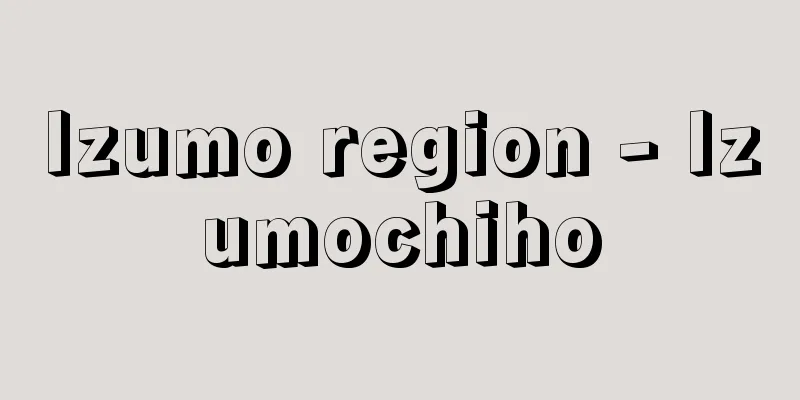La Divina Commedia

|
This is the masterpiece of the great Italian poet Dante. It is a magnificent epic poem consisting of 14,233 lines, and its well-balanced structure is often compared to a cathedral. It consists of three parts: "Inferno," "Purgatory," and "Paradise," each of which consists of 33 canticles and three lines per stanza. "Inferno" begins with a prologue, so the Divine Comedy is made up of 1 + 33 + 33 + 33 = 100, or 100 canticles. Dante believed in the doctrine of the Trinity, and attempted to achieve literary expression in this epic poem, so the numbers 1, 3, 9 (= 3 2 ), 10 (= 3 2 + 1), and 100 (= 10 2 ) (10 is a perfect number) are used throughout the work. The original title was originally simply "Commedia," but the adjective "Divina," or "sacred," was added later. The Japanese title "Divine Comedy" was used by Mori Ogai in his "Improvisational Poet" (1902), and became widely known in Japan due to its fascinating chapter "Divine Comedy, My Friend the Nobleman." Incidentally, "comedy" refers to a story that has a happy ending, as opposed to "tragedy," which ends sadly. The theme of the work is the fulfillment of the flesh-and-blood man Dante's journey to the afterlife. At Easter in the year 1300, the year of amnesty, the poet, who was in the middle of his life (35 years old), gets lost in a dark forest and enters hell between the late night of Holy Thursday and the early morning of Good Friday. He is guided by the great Latin poet Virgil to the center of the earth among the dead who committed crimes in life, and then he follows the waist of the great demon Lucifer, turns around once, emerges on the southern hemisphere, and reaches Mount Purgatory. From the earthly paradise there, he is guided by Beatrice (the woman who bestows blessings) to the highest heaven, and then St. Bernard becomes his third guide, and in the form of a pure white rose in heaven, he glimpses the mystery of the Trinity. This journey to the other side of the world lasts for almost a week from April 8, 1300. The reader travels through the three worlds with the protagonist Dante accompanied by three guides, gradually purifying their souls, and in that sense it can be called a great book of Catholicism. However, the book is not just a book promoting Christianity, as it contains fierce denunciations of the clergy, including the Pope, and describes the policies of Dante, an exile who was in sharp opposition to the Papacy, the poet's long-cherished wish to rebuild the Roman Empire and the political unification of the Italian peninsula, scientific thought via the Arab world, avant-garde poetry, theology, social criticism, and more, making it a book that summarises medieval Latin culture. Japanese translations include laborious works by Yamakawa Heisaburo, Nakayama Masaki, Taketomo Sofu, Nogami Soichi, Hirakawa Sukehiro, and Jugaku Bunsho, and there are also fascinating references to Masamune Hakucho, Yanaihara Tadao, and Hanada Kiyoteru. However, generally speaking, with Ueda Bin, Abe Jiro, and Uchimura Kanzo as its starting point, aesthetic interpretations and Christian approaches have remained mainstream, and the story has continued through three generations of the Meiji, Taisho, and Showa eras without fully grasping the original allegorical meaning of "love" from the Italian original. [Hideaki Kawashima] "The Divine Comedy, translated by Heizaburo Yamakawa, 3 volumes (Iwanami Bunko)" Source: Shogakukan Encyclopedia Nipponica About Encyclopedia Nipponica Information | Legend |
|
イタリアの大詩人ダンテの代表作。全1万4233行からなる壮大な長編叙事詩で、均整のとれた構成はしばしば大聖堂に例えられる。「地獄」「煉獄(れんごく)」「天国」の3編からなり、各編は33歌から、また各連は3行からなる。「地獄」の冒頭には序歌にあたる1歌が置かれ、結局『神曲』は1+33+33+33=100、すなわち100歌によって構成される。ダンテは三位一体(さんみいったい)説を奉じて、その文学的表現をこの長編叙事詩に達成しようと企図したため、1、3、9(=32)、10(=32+1)、100(=102)といった数字(10は完全数)が作品の隅々にまで行き渡っている。原題は初め単なる『喜劇』Commediaであったが、後年になって「神聖な」Divinaという形容詞が加えられた。邦訳名の『神曲』は、森鴎外(おうがい)が『即興詩人』(1902)のなかに用い、またその魅力的な一章「神曲、吾友なる貴公子」によって、広くわが国に定着した。なお、「喜劇」とは、悲しい最後に終わる「悲劇」に対して、円満な結末を迎える物語を意味する。 ところで、作品の主題は生身の人ダンテが彼岸(ひがん)の旅を成就(じょうじゅ)することにある。大赦の年1300年の復活祭に、おりしも人生のなかば(35歳)に差しかかった詩人は、暗い森の中に迷い込んで、聖木曜日の深夜から聖金曜日の未明にかけて地獄へ入り込み、生前に罪を犯した亡者たちの間をラテンの大詩人ウェルギリウスに導かれて地球の中心まで下り、大魔王ルチーフェロの腰を伝って1回転し、南半球側へ出て、煉獄の山まで達するが、そこの地上楽園からはベアトリーチェ(恵みを与える女)によって天国の至高天まで導かれ、さらに聖ベルナルドが3人目の導者となり、天上の純白の薔薇(ばら)の形のうちに三位一体の神秘をかいまみせる。この彼岸の世界への旅は1300年4月8日からほぼ1週間にわたって続くが、読者は主人公のダンテとともに3人の導者たちに連れられて三界を遍歴しながら、しだいに魂の浄化を遂げてゆき、その意味ではカトリシズムによる一大教化の書といってよい。しかしながら、作品の随所に、教皇を含めて聖職者たちへの熾烈(しれつ)な糾弾が語られ、単なるキリスト教の喧伝(けんでん)の書ではなく、政治的には教皇庁と鋭く対立する亡命者ダンテの政策が掲げられ、詩人の悲願であるローマ帝国の再建とイタリア半島の政治的統一、アラブ世界を経由した科学思想、また前衛的な詩法、神学、社会批判等々、中世ラテン文化の総決算の書となっている。 邦訳には、山川丙三郎、中山昌樹(まさき)、竹友藻風(たけともそうふう)、野上素一(のがみそいち)、平川祐弘(すけひろ)、寿岳文章(じゅがくぶんしょう)らの労作があり、正宗白鳥(まさむねはくちょう)、矢内原忠雄(やないはらただお)、花田清輝(きよてる)らの魅力的な言及もあるが、しかし概括すれば、上田敏(びん)、阿部次郎、内村鑑三(かんぞう)らを出発点に、審美的解釈とキリスト者的接近の仕方が主流を占めたまま、イタリア語原典から本来の寓意(ぐうい)としての「愛」をとらえきれないままに、明治、大正、昭和の3代を経つつあるといってよいであろう。 [河島英昭] 『山川丙三郎訳『神曲』全3冊(岩波文庫)』 出典 小学館 日本大百科全書(ニッポニカ)日本大百科全書(ニッポニカ)について 情報 | 凡例 |
<<: New song Urashima - Shinkyoku Urashima
Recommend
Amyntas I (English spelling)
… Macedonia appears in Greek history around the t...
Separatism - separatism
The idea and movement of a political, religious or...
Solandra - Solandra
A general term for the genus Solandra in the Sola...
Kugahara style pottery
...The remains of a late Yayoi period settlement,...
Kari Niyazov, TN - Kari Niyazov
…After Shah Rukh's death, the country fell in...
Gastric mucosa mucin
… [Topical antacids] These compounds are difficul...
Turtle tail - millet
An industrial city in the center of North Gyeongsa...
Il'ya Ivanovich Ivanov
1870‐1932 A Soviet biologist, he was the first per...
William [I] - William
The first Norman king of England (reigned 1066-108...
Boulder - Kyoreki
① Boulder : Generally a worn, rounded fragment mea...
Anegawa earthquake
An earthquake that occurred on August 14, 1909, ne...
Diplonychus rusticus
… [Shoichi Miyamoto]. … *Some of the terminology ...
Churning
Also called churning. In butter production, the ra...
Helingor Han Tombs (Helingor Han Tombs) - Helingor Han Tombs (English: Helingor Han Tombs)
A mural tomb of the Later Han dynasty located on t...
In the garden
〘noun〙① In the garden. Within the garden. ※Man'...









